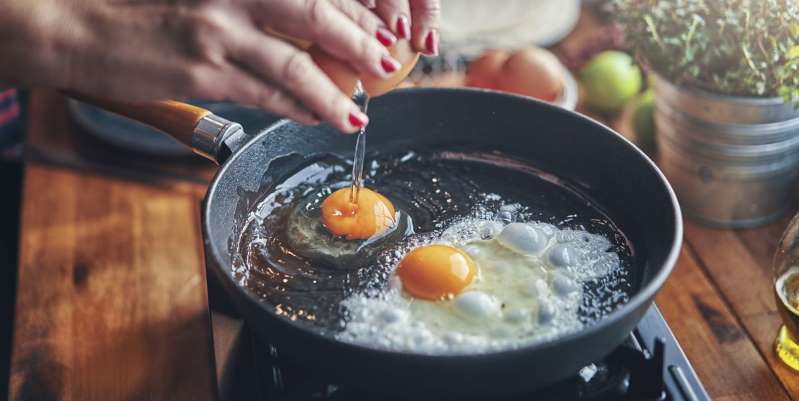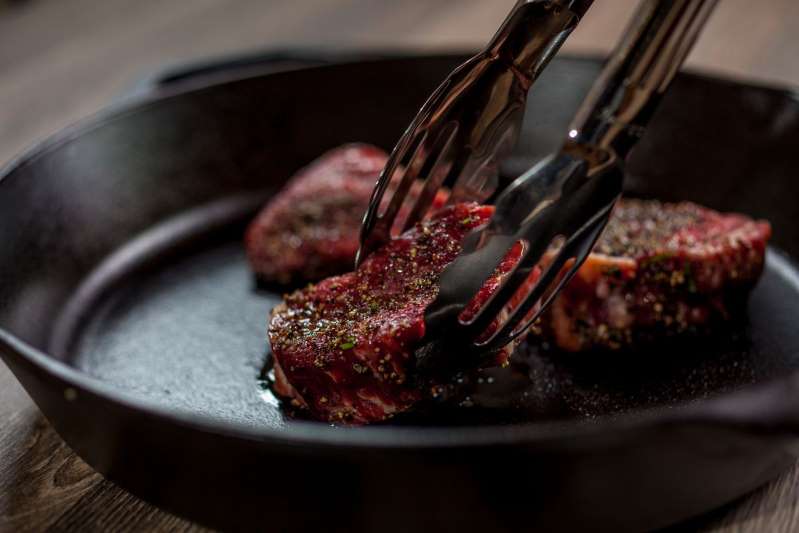If you’re looking to whip up a deliciously juicy, restaurant-inspired steak, no other type of pan will sear your meat better than a cast iron skillet. Not only can you sauté, roast, sear, bake, braise, and more in these multi-functional pans, but they’re also extremely durable and affordable to meet all of your cooking needs.
Their ability to get and then stay really hot makes them ideal for cooking meats and stir-fries, while the fact that they can go from the stovetop to the oven results in perfect baked goods like cornbread and pie. And while you’ll have to scrub your other pots and pans clean, all you have to do is rinse a cast iron skillet with warm water post-cooking. Talk about a low-maintenance piece of kitchen equipment!
Though you may be excited to order a cast iron skillet and start cooking away, the trick to achieving great results is knowing when to use them—and when another pan might be better for the type of food you’re making. Here are five things you should avoid cooking in a cast-iron skillet.
1. Tomato Sauce
Acidic foods like tomatoes can damage the seasoning, or the nonstick coating, of your skillet. What’s worse, the end result will taste metallic, especially if it’s something—like a slow-simmered pasta sauce—that requires a long cooking time. Skip the cast iron for your bolognese and use stainless steel instead.
2. Wine-Braised Meats
It’s not the greatest idea to cook foods that require deglazing with wine or vinegar in a cast iron skillet. Unless your skillet is perfectly seasoned, the acid can leach small amounts of metal into your food, giving it an off-taste and potentially harming your health.
Some of your favorite desserts like pie and cornbread can be baked to perfection in a cast iron pan—it adds an appealing crisp edge to cakes and quick breads, and it can go straight from the stovetop to the oven. But if you mainly cook savory foods in your skillet, those residual flavors can transfer into whatever you’re baking, giving your dessert an expected flavor. If you have multiple skillets, designate one for garlicky stir-fries and another for the sweet stuff.
4. Omelets
Omelets and other egg dishes can stick to the surface when you try to remove them from a cast iron skillet. That means, in addition to serving up an ugly omelet, you may be tempted to soak your pan to get it clean, which will definitely remove the seasoning. Go for an enamel pan instead, and those perfectly folded omelets will slide out with ease.
5. Delicate Fish
Like eggs, flaky fish fillets can stick to a cast iron pan, making them difficult to remove. The hard scraping to remove your delicate fishes can damage the seasoning on your skillet. While cast iron is great for searing a steak, thanks to how hot it gets (and stays), enamel is better for fish like tilapia, cod, and flounder. Salmon and tuna steaks will cook perfectly in your cast iron pan, though, so feel free to try those out.







